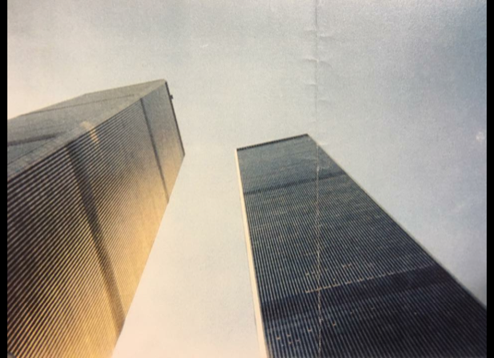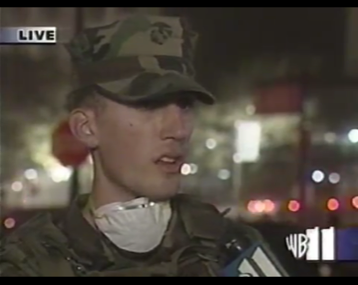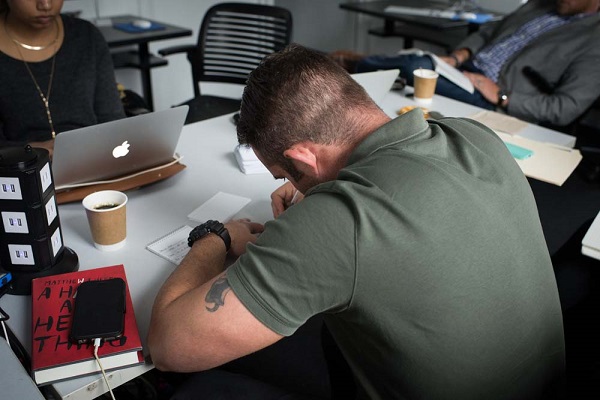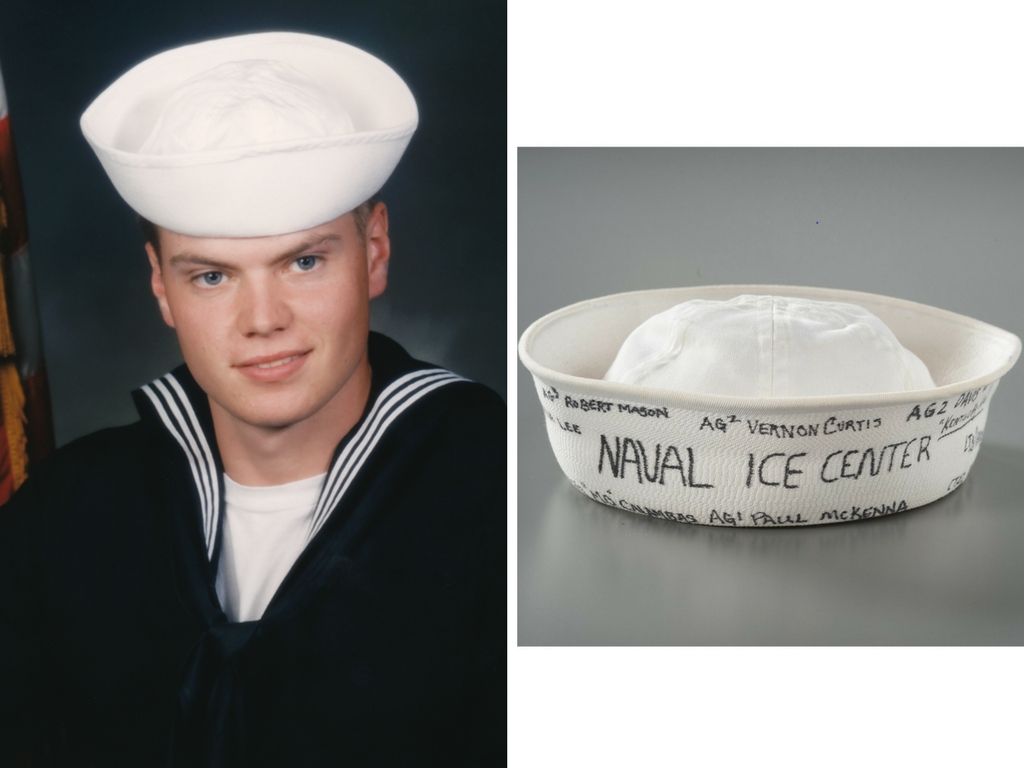Make a donation to the museum
Iraq War Veteran Remembers Volunteer Effort at Ground Zero
Iraq War Veteran Remembers Volunteer Effort at Ground Zero

Before the towers came down, former Battery Park City resident Jeffrey Keating used to cut through the World Trade Center plaza daily to attend his classes at Pace University. He remembers how he used to sometimes lay his hand on the concrete façade of the northwest corner of the South Tower and look up, marveling at its size, how it contained universes of people.
On Sept. 10, 2001, a friend from California was visiting and asked Keating to “take her somewhere magical.” He took her to the World Trade Center, and laid on his back on the asphalt to take a photo of the towers reaching into the sky, a photo that he still has.
Many people who lived in New York before 9/11 have a personal relationship with the Twin Towers, but Keating’s runs deep. From visiting the towers as a kid with his father, to living in lower Manhattan as an undergraduate, to joining the rescue and recovery effort at Ground Zero, to deploying to Iraq, the significance of the World Trade Center looms large for Keating.
Keating, 39, now works and lives in the Boston area. He hails from a long line of Navy men. He always knew he wanted to serve, but when the time came, he enlisted in the U.S. Marine Corps reserves while he completed his undergraduate degree. As part of our Salute to Service week, we’re highlighting Keating’s personal history, which is keenly interwoven with the events of 9/11 and its repercussions.
By all accounts, it was a beautiful early morning on Sept. 11, 2001—what pilots call “severe clear”—a far cry from the downpour that had soaked Keating on his way home to Long Island from a Jamiroquai concert at the Hammerstein Ballroom the night before.
The school year had just started, and he left home early that morning to buy his textbooks at Borders bookstore in 5 World Trade Center. When Keating’s Long Island Railroad train trundled into Jamaica Center and he saw black smoke trailing from the New York skyline, he immediately comprehended that a terrorist attack was underway.
“I wanted to be [downtown] the moment the towers were hit,” he remembers. But train service was stalled. He asked passersby for a ride into the city and even contemplated running from Queens to lower Manhattan, about 12 miles away. Eventually, he boarded a train bound for Minneola, Long Island, found his mother at her office and asked her to give him a ride home to collect his medical kit and change into his Marine Corps uniform.
He finally managed to get on a train that was operating exclusively for emergency service personnel, and when he arrived at Penn Station, he proceeded to run to the World Trade Center site. He passed St. Vincent’s Hospital in Greenwich Village and saw dozens of medical personnel outside assembling a makeshift triage, clearly expecting an overflow of injured patients.
Keating arrived at the World Trade Center site after both buildings had collapsed and joined the search for survivors.
“I wanted to find every face I had walked by in that neighborhood,” he said.
Instead, he found isolated yet eerily relevant objects in the rubble: a black-and-white headshot of Fiduciary Trust Company International’s CEO Anne Tatlock—scraped, but intact—and a New York City landmarks souvenir that prominently featured the Twin Towers. In both instances, the remarkable condition of these small, seemingly vulnerable objects, compared to the vast destruction that surrounded him, motivated Keating to save them.
Keating was at Ground Zero when 7 World Trade Center collapsed at 5:20 p.m., and he took shelter from the raining debris in a nearby subway station. He remained at Ground Zero until 11 p.m. that night. Riding the LIRR train home that night, he saw rows of dazed faces of his fellow passengers. Some took notice of his Marine Corps uniform and approached him with photos of loved ones, wondering if he’d seen them.

Jeffrey Keating giving an interview in the early evening on Sept. 11, 2001.
Keating returned to Ground Zero at 4 a.m. on September 12 with his staff sergeant and fellow Marines and joined the bucket brigade, where workers stood shoulder to shoulder and passed debris from person to person to unearth victims in the rubble. He spent the day climbing down into voids and being thwarted by occasional fires that were still burning strong beneath the rubble. Using hammers to tap on fallen beams, he attempted to communicate with trapped survivors to no avail.
After hours of effort, an airhorn sounded to alert responders of a possible building collapse. Work stopped, and he found himself at a nearby bar where firefighters were offering solemn toasts to their fallen colleagues while people prayed, cried or sat in stunned silence.
“It was one of the most emotional things I’d ever experienced,” Keating recalls. For the first time, he realized the gravity of it all, that it wasn’t going away. When he stepped out onto the street, he remembers, “It felt like stepping out onto the moon.”
Keating had intended on enrolling in Officer Candidates School once his studies at Pace were completed. But after 9/11, he withdrew his application. He knew he would be deployed and wanted to stay with his unit. In 2004, Keating was deployed to Fallujah, Iraq, in support of “Operation Phantom Fury,” a joint American, Iraqi and British offensive. He served in Iraq for nine months.
Keating still dreams about the World Trade Center but not his days at Ground Zero. In the dreams, the towers stretch into the sky, speakers in the Callery pear trees play soft elevator music and people walk swiftly across the plaza, just as he remembered.
“I would have dreams about it and wouldn’t want to wake up,” Keating said. “It was so beautiful.”
By Anne Dellinger, Digital Content Manager, 9/11 Memorial & Museum
Previous Post
Service Members and Writing Fellows from The War Horse Reflect on Visit to the 9/11 Memorial & Museum

Everyone who was alive that day, and many who were not yet born, has a story to tell about September 11. The War Horse is creating a home for these personal stories.
Next Post
Remembering U.S. Navy Petty Officer First Class Edward Earhart

Petty Officer First Class Edward Earhart was an aerographer’s mate in the U.S. Navy. Earhart served on ships across the globe, helping the vessels navigate around sea ice, before being stationed at the Pentagon.